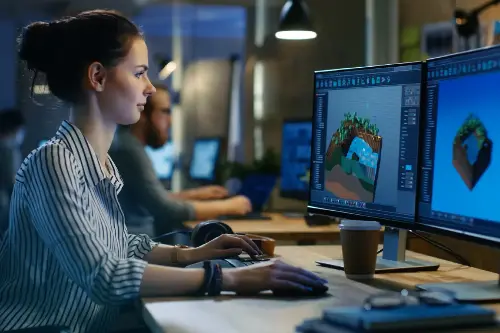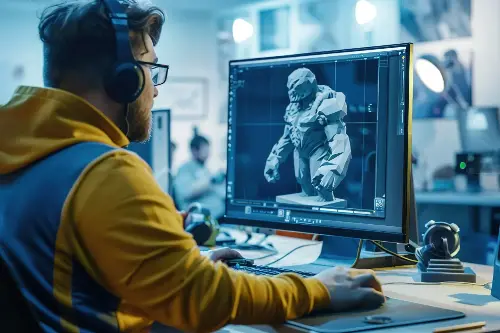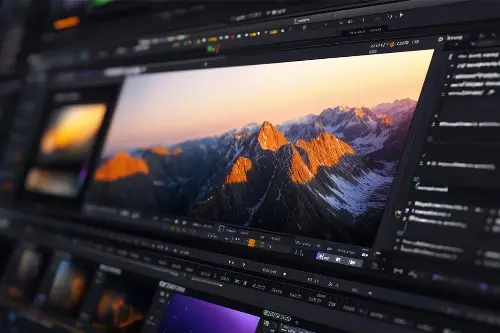In an age where digital media reigns supreme, graphic design has emerged as a critical pillar in the entertainment industry. It’s a transformative force that shapes how stories are told and experienced by audiences worldwide. From the initial branding of a film to the immersive environments of video games, graphic design's influence is pervasive and powerful, often determining how engaged and invested an audience becomes in a narrative.

Branding and First Impressions
The art of storytelling begins long before the opening scene of a movie or the first level of a video game. It begins with the branding, which often takes the form of a poster, logo, or box art, designed to capture the essence of the story in a single, compelling image. A well-designed logo or poster is not just about visual appeal; it’s a visual cue that tells the viewer what to expect, setting the tone for the story that unfolds. It is through graphic design that a first impression is crafted, anchoring the narrative in the viewer's mind and influencing their decision to engage further.
Graphic Design in Film and Television
In film and television, graphic design is used to create title sequences that are artworks in themselves. They set the stage for the story, oftentimes becoming iconic cultural references—think of the undulating typography of "Stranger Things" or the detailed map that unfolds in "Game of Thrones." These intros do more than just display names; they immerse the audience in the world of the story, building excitement and anticipation.
Beyond the opening credits, graphic design enhances storytelling through the use of on-screen graphics and visual effects. Whether it's the holographic displays in a sci-fi epic or the ancient runes in a fantasy series, these elements add a layer of believability and depth that helps sustain the narrative illusion. In essence, graphic design works hand-in-glove with the narrative to create a richer, more engaging viewing experience.

Marketing and Engagement
The role of graphic design doesn't stop at the visual elements within the entertainment product itself. Marketing materials, from billboards to digital ads, rely on the creativity of graphic designers to capture the attention of potential viewers. These pieces of visual communication are vital in engaging the audience, often creating an emotional connection and sparking conversation even before the release of the entertainment product. Good marketing design generates buzz and can significantly affect the success and reach of a movie, series, or game.
The Gaming Experience
In the realm of video gaming, graphic design is critical in crafting user interfaces and heads-up displays (HUDs) that are not only functional but also enhance the storytelling. The design of elements such as health bars, ammo counts, and menus must be intuitive and seamlessly integrated into the gaming environment. In this way, graphic design directly influences the player's experience, affecting their immersion in the game's world and narrative. A well-designed game HUD facilitates a direct connection between the player and the character they control, enabling a more profound storytelling experience.

Graphic Novels and Beyond
The synergy of graphic design and storytelling is perhaps most evident in the world of graphic novels and comic books. Here, visual art is not just an enhancement but the primary vehicle of the narrative. Designers and artists work closely to merge text and image in a way that neither could achieve alone, creating a unique form of storytelling that has given rise to some of the most memorable characters and stories in popular culture.
Interactive and Transmedia Storytelling
The evolution of technology has expanded the frontier of graphic design into new realms of interactive and transmedia storytelling. Engagements are now multi-dimensional, with stories unfolding across various platforms and requiring active participation from the audience. Here, graphic design is crucial in creating a cohesive visual language that maintains narrative continuity across different media, from social media content to augmented reality experiences.

Graphic design's role in the entertainment industry extends far beyond pure aesthetic enhancement. It is a driving force that makes stories more engaging, narratives more immersive, and characters more relatable. It is the magic behind the scenes that turns a simple tale into a compelling visual journey, one that captivates and resonates with audiences on a deep and enduring level. As technology advances, and the ways we encounter stories continue to evolve, the bond between graphic design and storytelling will only grow stronger, further transforming how we experience and engage with the world of entertainment.
